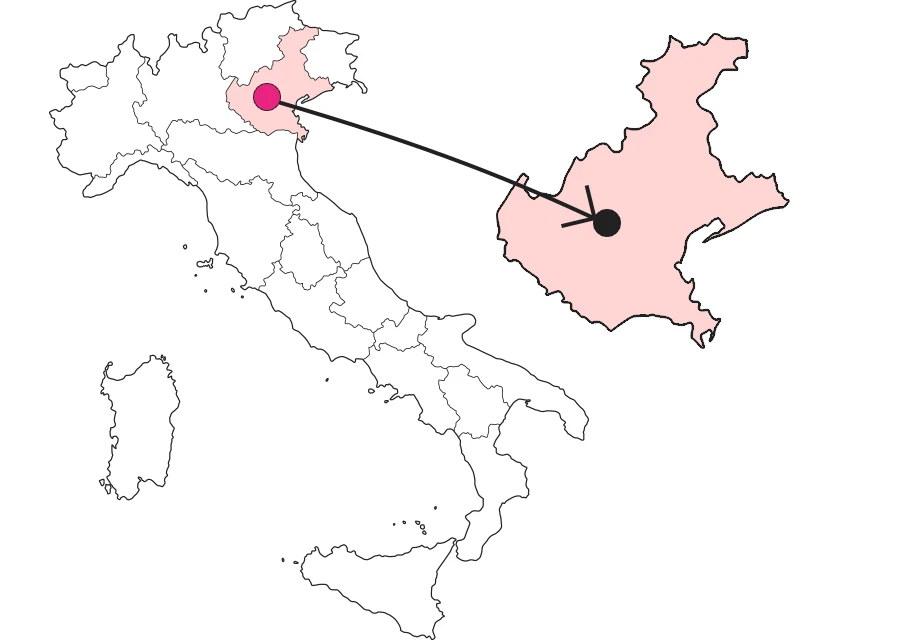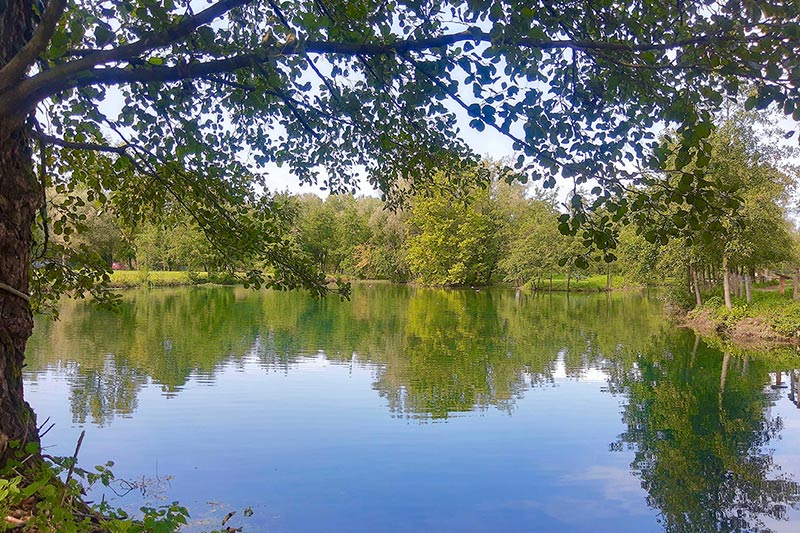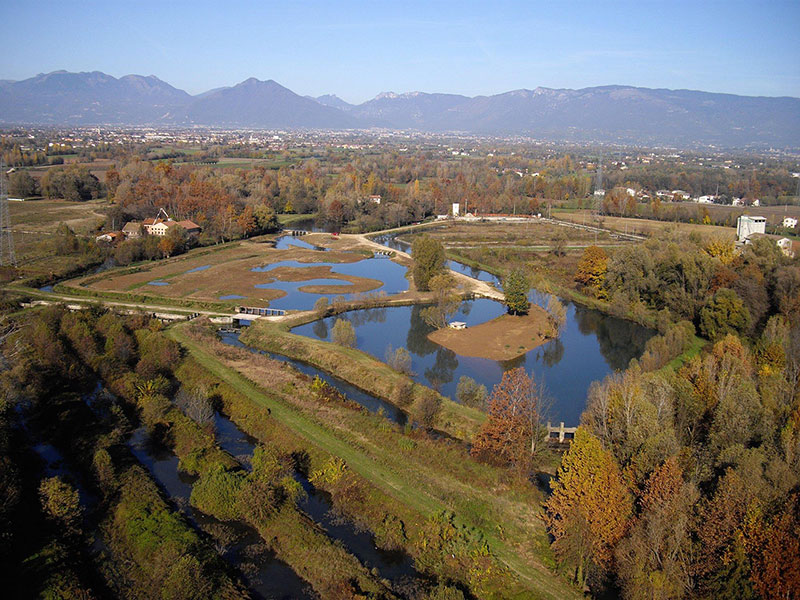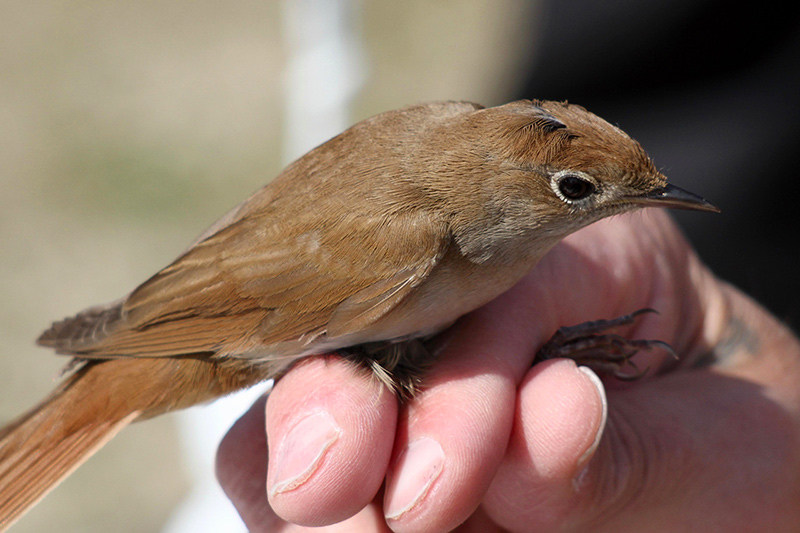












The resurgences of the Bacchiglione River
Upper Vicenza's resurgences, filed with the years of trout farming, have become a family-friendly nature reserve


Where

TheBacchiglione is the river that forms just north of Vicenza, in open country, as if by magic. In a virtual descent a dozen kilometers would be enough to reach the city of Palladio and another thirty or so to bypass the walls of Padua, finally reaching the Brenta just before it empties into the sea south of Chioggia. Truly a beautiful river, starting with the resurgence area, the protagonist of an exemplary environmental regeneration affair that in 2011 led to the creation of a nature reserve open to the public.
 Overall view of the body of water formed by the resurgences of the Bacchiglione River
Overall view of the body of water formed by the resurgences of the Bacchiglione RiverThe protected area
It is located within the triangle formed by the towns of Dueville, Caldogno and Villaverla; traveling along the major roads, one grasps the overall beauty of the area, but it is by going further into the smaller localities that one discovers its small treasures. The most intact nucleus is the so-called Dueville Forest, which preserves the original flora of the lowland wetlands, from forests of willows, poplars and alders, to the floating vegetation of the many waterways that run through it. All around, a countryside of ancient beauty with stable meadows and arable land, framed by hedges and arboreal rows.
 The resurgence area of the Bacchiglione River in 2011, immediately after the restoration of the original hydrographic network
The resurgence area of the Bacchiglione River in 2011, immediately after the restoration of the original hydrographic networkThe resurgence belt
The reserve is part of one of the most interesting habitats of the Po Valley, the so-called "resurgence belt," along which there are dozens of those amazing water outcrops so copious that they shortly generated real rivers, as in the case of the Bacchiglione. The resurgence, otherwise known as fontanile (in dialect "fontanasso"), takes place along the line where the water table intersects the ground plane, that is, where the waters of the mountain streams, having penetrated the gravelly subsoil of the upper plain, meet the clay layers of the lower plain and are driven to the light. The resurgences have their first manifestation in the gurgling of the springs ("boj" or "boje"), from where the water flows until it reaches the ditches that meet in the river. The environment formed by these streams at a constant temperature of 10 to 13 degrees, whatever the season, is very special because of the submerged vegetation that remains lush even in winter, when the countryside all around is gripped by frost.
 The characteristic resurgence environment bordered by dense aquatic vegetation
The characteristic resurgence environment bordered by dense aquatic vegetationEnchanting flora and fauna
For the naturalist, resurgences are environments of exceptional interest because of the concentration of botanical and animal species found there. And it is not necessary to have much experience to appreciate their most particular aspects, starting with the ditches, always verdant with aquatic plants swaying in the current, spectacular when they are covered with white flowers at the water's surface. Recognizing fish and amphibians takes a little eye, while for birds it is often more useful to stretch your ear to catch their calls before you see them dart by. Small skills, which are learned on the spot from nature guides. Then there are birdwatching huts, camouflaged in strategic spots to observe pond wildlife. Silence, a little patience and possibly a pair of binoculars, that's what it takes for the reserve's most confidant inhabitants, moorhens, ducks and herons to make their appearance in the field of vision, not excluding a lucky shot, a kingfisher darting to the surface of the water or the waterbuck sticking out of the tangle of reeds.
 At the edge of the greater body of water, one of the birdwatching huts
At the edge of the greater body of water, one of the birdwatching hutsOf human interventions and returns to nature
It was the Roman settlers, but even more so the Benedictine monks in the Middle Ages, who implemented those land reclamations that transformed the primordial expanse of forests of the Po Valley into a scene of virtually seamless fields. The few remaining patches of those great forests have endured only along the rivers and in the wetlands, especially in the resurgence belt. In the Vicenza area, however, such an abundance of water, in addition to fostering traditional mill activity and rice cultivation, convinced people in the recent past to invest in fish farming. Thus it was that in the second half of the twentieth century the area of the Bacchiglione springs also saw the excavation of canals and ponds that with their geometries overlapped the natural hydrographic network. Then, having exhausted the market interest for farmed trout, the decommissioned facilities were mostly abandoned as wild vegetation returned. In the case of the resurgences of the Bacchiglione, however, there has also been a providential environmental restoration: ancient maps in hand, once in a while bulldozers have worked to recreate natural riverbeds, returning the river to its deepest roots.
 A nightingale (Cettia cettia), taken at the reserve's ringing station
A nightingale (Cettia cettia), taken at the reserve's ringing stationMigration stories
The reserve is home to a ringing station , which is the study of the migration of birds that are caught in special nets in order to attach a band bearing an alphanumeric identification code to one leg. Once released, the birds continue on their journey, and in the event of their eventual capture by a similar ornithological station, or accidental discovery, their path and even time can be determined. The results of these study campaigns often yield surprising results because certainly birds of rare species may occur, but more often it is the distances traveled by the migrators that cause amazement. It happened, for example, to recapture a bunting, a small marsh bird, which had been ringed in Finland, thus returning from a migration of 2,500 kilometers and from flying over the Alps. On the opposite end of the spectrum, the green reed war bler, a nesting species at the headwaters of the Bacchiglione River, comes and goes from southern Africa, crossing seas and deserts along a route that ornithologists want to reconstruct by equipping some specimens with an ultralight GPS tracker.
Enter the Map of Italy's Undiscovered Wonders and find treasures where you least expect it... Inspire, Recommend, Share...
Collections
The Map thanks:
In the Community
Enter the Map of Italy's Undiscovered Wonders and find treasures where you least expect it... Inspire, Recommend, Share...
Where

Collections

